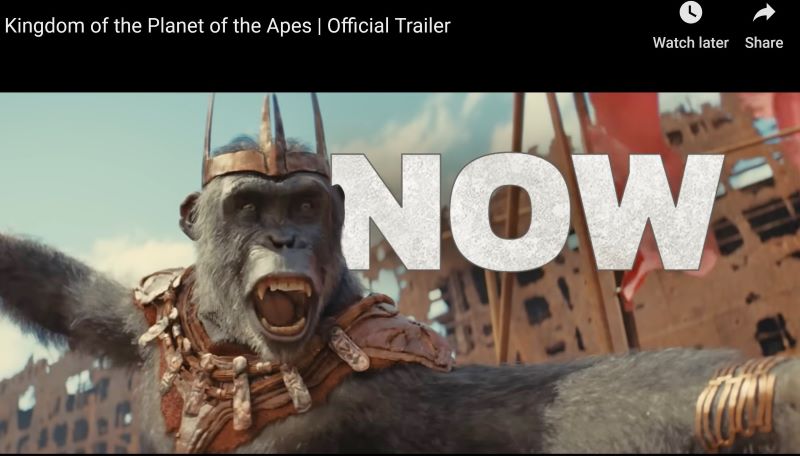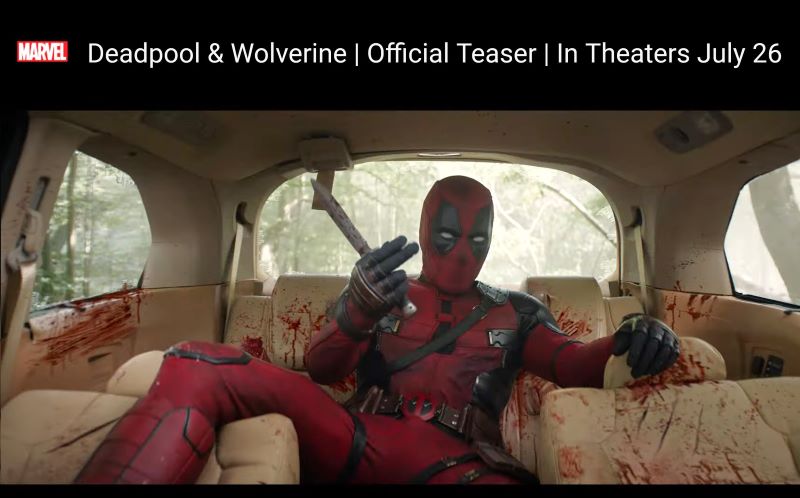
Movies from three of Hollywood’s five major studios played during Sunday’s Super Bowl, with advertisers reportedly paying $7 million for each 30-second spot. Nine movie, film branding and streaming platform spots were televised in-game, at the high end of the four-to-eight range typical for Hollywood fare in the NFL finale. Another handful of film-related commercials ran in the pre, post and half-time.
A record-high audience 123.4 million on CBS Television watched the Kansas City Chiefs beat the San Francisco 49ers 25-22 in overtime. The Super Bowl is always U.S. TV’s largest in recent years because, unlike other sports championships, fans watch without concern if their favorite teams are not in the game.
For in-game placement, Universal Pictures had four commercials: “Kung Fu Panda 3” in theaters March 8, “Monkey Man” that is “only in theaters April 5,“Twisters” in cinemas July 19, and stage-play adaptation “Wicked” premiering Nov. 27. “Wicked” also got an advertising billboard mention (a billboard is a short mention asserting an advertiser is a “sponsor” of a longer program segment). A “Kung Fu Panda” commercial also ran in the football game’s overtime.
Walt Disney Studios placed three blurbs in game: “Deadpool and Wolverine” (also called “Deadpool 3”) that is a July 26 release and “Kingdom of the Planet of the Apes” that hits theaters May 10. There was a third commercial as well with an odd corporate commercial pitching sentimentality with memorable phrases from Disney film lore.

Last, there’s the Paramount Global Communications properties that loaded up on the Super Bowl, vacuuming up inventory on its corporate sibiling CBS Television. These included on-air promotion spots for specific CBS TV shows (not logged here) and the like.
The final two of the nine in-game commercials are Paramount’s undated theatrical premiere “If,” which is a comedy-fantasy co-starring Ryan Reynolds, and Paramount-owned Pluto TV, which is the ad-supported video streamer loaded with movies.
Also in-game are commercials for Paramount+ original limited TV series “Knuckles” and for an FX cable network/Hulu/Disney “Shogun” miniseries. Neither is counted among the nine film spots.
Last year, the count was seven film-related Super Bowl spots vs. the nine this cycle. But it’s tricky to define what’s movie-related in the age of video streaming, where streaming platform subscriptions are marketed with blasts of film titles. About 55 commercials in total run in-game each year.
After the game, content from Super Bowl commercials are incorporated in new trailers immediately released online. The big winner this year is a trailer for “Deadpool and Wolverine” racking up a sky-high 365 million online views after the springboard of its Super Bowl commercial.Trailers are three to four times longer than 30-second commercials.
Another notable in-game Super Bowl commercial from Hollywood seems “Kingdom of the Planet of the Apes” because it’s loaded with action, a good fit with the football male demographic. Also, the images of apes running amok are quite a grabber.
In total, three of Hollywood’s major studios bought in-game commercials: Disney, Paramount and Universal. Sitting out were majors Warner Bros. Pictures and Sony Pictures. No independents, such as Lionsgate, bought commercials, which is unusual because most years some indies are in evidence. But none appeared, even in cheaper pregame, post-game and halftime show where indies can best afford.
This year, the 30-second, in-game commercials sold for up-to a reported $7 million each, though that figure is a high-water mark. The cost is reduced if advertisers simultaneously purchase additional advertising inventory. Spiraling costs irk advertisers, but pricing seems always propped up by new classes of marketers, such as online gambling platforms this year and various high-tech service outfits, buying spots and making available slots more scarce.
Creatively, most commercials are backloaded with their “sell” and start out with intriguing imagery that is mysterious and off-brand. When the commercials start, viewers doesn’t know who the advertisers are. The reveal is at the end, or the back end, which assumes viewers are intently watching.
“The Super Bowl placement really became popular in 1996 with Fox’s ‘Independence Day,’ whose gripping shot of the White House being blown to smithereens by aliens delighted the male audience,” says the third edition of “Marketing to Moviegoers,” the academic business book. The first Super Bowl was in 1967.
Another characteristic of creative messaging this year is to play it safe. No staking out public positions in America’s divisive cultural wars, after Bud Light created a firestorm with a woke advertising campaign 10 months ago that cratered its beer sales.
At this year’s Super Bowl, viewers can say they were bombarded with celebrities in commercials, mostly projecting playful fun: Arnold Schwarzenegger struggled pronouncing a word clearly with his Austrian accent for State Farm insurance; Ben Affleck and Jennifer Lopez appeared in a goofy Dunkin Donuts commercial (along with Affleck collaborator Matt Damon and retired footballer Tom Brady); famed director Martin Scorsese stuck in street traffic fronting for website builder Squarespace; and the list goes on.
Film marketers were also in evidence in the Super Bowl pregame and post-game, where commercials cost between hundreds of thousands of dollars to a reported $4 million.
Paramount-related entities took five of these off-peak slots including for horror film prequel “A Quiet Place: Day One” whose domestic premiere isn’t yet firmed and last year’s theatrical “Mission: Impossible — Dead Reckoning Part One” for streaming on the Paramount+ platform.
Universal Pictures advertised three movies on game adjacencies: “Kung Fu Panda 3” (a “Panda” commercial also ran in-game in overtime); “Despicable Me 4,” which premieres July 3; and movie adaptation of TV series “Fall Guy” hitting cinema screens May 3. Disney placed a commercial for animated “Inside Out 2” in the post-game.
This list is created from watching in New York City; CBS Television did not supply an official list, and discrepancies are possible with any local spot commercials that did not run nationally and differences in classifying in-game, pregame, post-game and half-time positions.
Leave a Reply